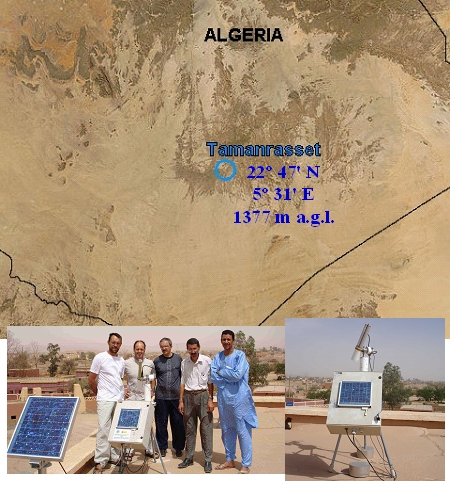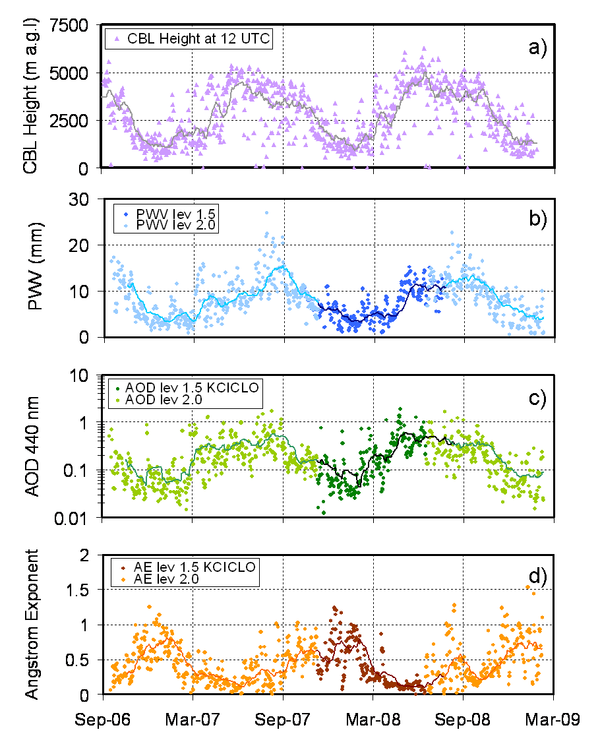“Aerosol characterization at the Saharan AERONET site Tamanrasset” paper published in Atmospheric Chemistry and Physics (ACP-Discussion phase)
This paper presents an analysis of more than two years of columnar atmospheric aerosol measurements (2006–2009) at Tamanrasset site. Tamanrasset is a strategic site for aerosol research placed in the heart of the Sahara.

Figure 1. Location of Tamanrasset station and Cimel sun-photometer set-up.
For this analysis, AERONET level 2.0 data supplemented by corrected level 1.5 data (KCICLO method) were used. The annual variability of aerosol optical depth (AOD) and Angstrom exponent (AE) has been found to be strongly linked to the Convective Boundary Layer (CBL) thermodynamic features. The dry-cool season (autumn and winter time) is characterized by a shallow CBL and very low mean turbidity (AOD ~ 0.09 at 440 nm, AE ~ 0.62). The wet-hot season (spring and summer time) is dominated by high turbidity of coarse dust particles (AE ~ 0.28, AOD ~ 0.39 at 440 nm) and a deep CBL.

Figure 2. Time series of (a) Convective Boundary Layer (CBL) height determined from the 12:00 UTC soundings in Tamanrasset, and AERONET (Aerosol Robotic Network) daily mean values of (b) precipitable water vapour (PWV), (c) aerosol optical depth (AOD) at 440 nm, and (d) Angstrom exponent (AE) in the range 440–870nm. Solid lines correspond to 30 day moving averages.
The aerosol-type characterization shows desert mineral dust as prevailing aerosol. Both pure Saharan dust and very clear sky conditions are observed depending on the season. In spite of this, several case studies indicate an anthropogenic fine mode contribution from Libya and Algeria’s industrial areas. The Concentration Weighted Trajectory (CWT) source apportionment method was used to identify potential sources of air masses arriving at Tamanrasset: the triangle formed by Adrar des Ifoghas, Hoggar Mountains and Aïr Massif; a complex distribution of dust sources including northern Mali, northern Mauritania and the western flanks of Hoggar Mountains; and the eastern Libyan Desert. However, the Bodélé Depression (one of the most significant dust sources in the world) has been found to be minor potential source at Tamanrasset. Furthermore, microphysical and optical properties and precipitable water vapour were also characterized.
For further details about this work please refer to:
C. Guirado, E. Cuevas, V. E. Cachorro, C. Toledano, S. Alonso-Pérez, J. J. Bustos, S. Basart, P. M. Romero, C. Camino, M. Mimouni, L. Zeudmi, P. Goloub, J. M. Baldasano, and A. M. de Frutos, Aerosol characterization at the Saharan AERONET site Tamanrasset, Atmos. Chem. Phys. Discuss., 14, 16641-16690, 2014.
The paper is now accessible and open for Interactive Public Discussion until 19 August 2014 at:






